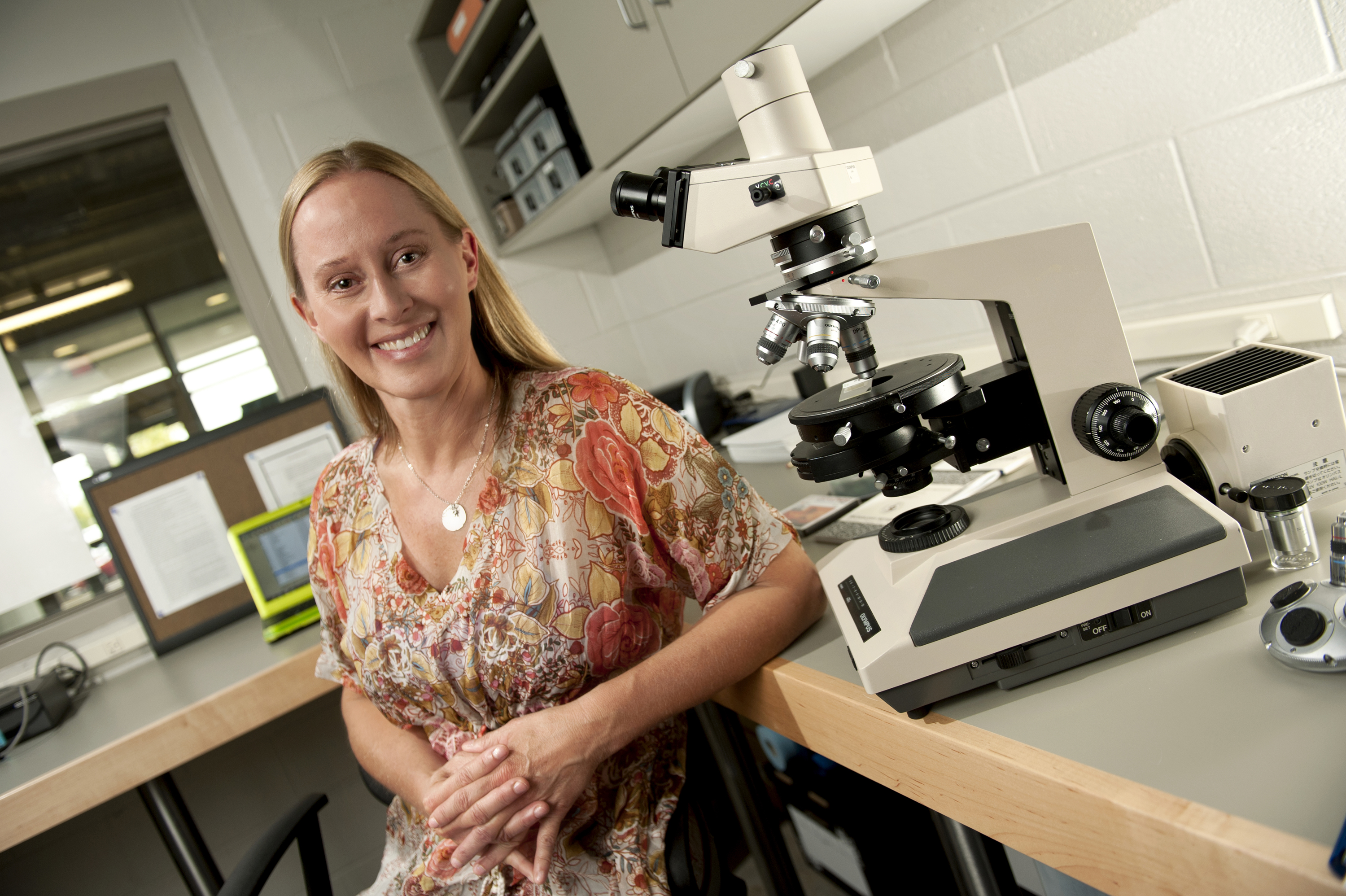Prevention through Design: A new approach to reduce construction risks

"Some of the most pressing occupational health hazard risks in construction" are associated with masonry operations, asphalt roofing, and welding, wrote Deborah Young-Corbett in an article recently accepted by the Journal of Civil Engineering and Management.
To reduce these health risks to construction workers, Young-Corbett, an assistant professor of civil and environmental engineering at Virginia Tech and a member of the university's Myers-Lawson School of Construction since 2007, has studied much of the existing literature, identifying numerous gaps or problems in current construction practices.
As a result, Young-Corbett is working in a new field of engineering known as Prevention through Design or PtD. The optimal method of preventing occupational illnesses, injuries, and fatalities is to "design out" the hazards and risks; thereby, eliminating the need to control them during work operations, Young-Corbett said. This approach involves the design of tools, equipment, systems, work processes, and facilities in order to reduce, or eliminate, occupational hazards and environmental risks.
She is teaching these new state-of-the-art design tactics in her classes, providing her undergraduate and graduate students with a better understanding of how to improve the long-term success of the construction industry. Young-Corbett is a certified industrial hygienist, safety professional, and hazardous materials manager with a background in environmental sciences, human factors engineering, and industrial engineering.
In 2008, the National Institute for Occupational Safety and Health launched the PtD initiative in an attempt to mitigate hazards in the construction sector in the design stage.
Yet, four years later, Young-Corbett's review of the industry's safety procedures shows some of the "barriers" to PtD adoption and she identifies strategies for the construction industry to use to improve its health records.
Young-Corbett provides evidence in her assessment of the industry of a "gap" in the PtD initiative that does not address the approaches to "occupational health hazard control," with the key word being "health." These "health risks arise when workers are exposed to chemical, biological, or energetic hazards that might lead to various illnesses or fatalities," Young-Corbett said.
For example, additional changes in tool selection in masonry could alleviate much of the health risks, according to Young-Corbett. With a masonry operation, a key issue is to reduce the silica dust produced when sawing. Now that wet methods are available for hand-operated grinders used for surface finishing and cutting slots, these devices can keep operators' exposures to silica below Occupational Safety and Health Administration (OSHA) limits, she noted.
Construction supervisors should also be advocating hand operated surface grinders that are made with better vacuum dust collection systems, also reducing an operator's exposure to silica.
In roofing, the workers' exposure to asphalt fumes and vapors lead to both acute and chronic effects. Lung cancer is at an elevated risk for asphalt roofers. But, as Young-Corbett argued in her paper, delivery of hot asphalt to a job site via a tanker, eliminates the on-site kettle operation for handling and heating the asphalt, and makes a difference to the health of the worker.
Similar relatively simple changes in the practice of welding can also make an impact in the decline of health-related problems. The use of local exhaust ventilation systems can prevent worker exposure to metal fumes during welding, Young-Corbett wrote in her article in the Journal of Civil Engineering and Management.
In general, Young-Corbett said there are still needs for designs for better tools or materials, but in other cases, "effective tools exist but are not widely adopted within the industry ... there is a need to elucidate the barriers to PtD adoption and to identify strategies for improved diffusion within the construction industry."
"The further refinement and marketing of PtD solutions such as the smokeless welding gun, the low-smoke welding wire, and the local-exhaust ventilation systems for welding are needed," she asserted.
Several of the research endeavors of Young-Corbett's laboratory have been in the realm of PtD. A NIOSH-sponsored research project entitled Dust-control Usage: Strategic Technology Intervention (DUSTI), developed new equipment design solutions for dust control in construction and an intervention for improving adoption rates within the industry. In a project sponsored by the National Science Foundation, a pervasive computing system was developed for sensing construction worker exposure to carbon monoxide and wirelessly summoning assistance in the event of over-exposure. Young-Corbett recently received a grant from NIOSH to develop PtD design and intervention strategies for health hazard control in masonry, asphalt roofing, and welding trades.




